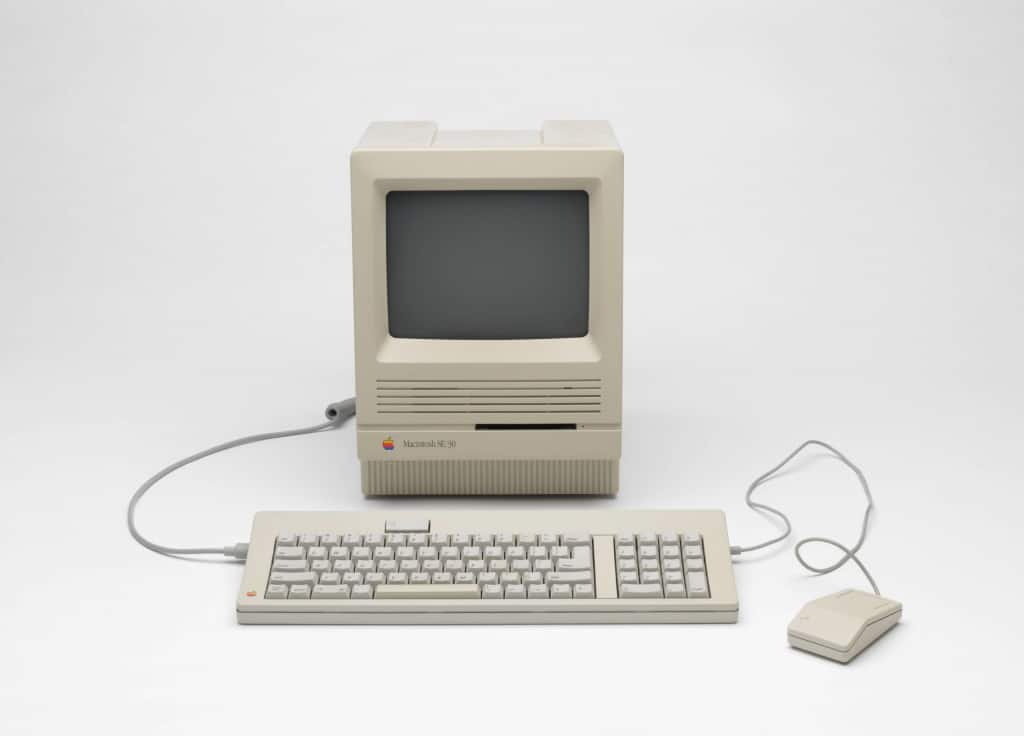In the annals of computing history, certain devices hold a special place in the hearts of enthusiasts and collectors. Among them is the Macintosh SE/30, a groundbreaking personal computer introduced by Apple on January 19th, 1989.
Sporting impressive specifications and a sleek design, the SE/30 quickly became a favorite among power users and professionals seeking a reliable and powerful computing experience. Even today, 35 years later, this classic piece of technology continues to captivate the hearts of collectors and enthusiasts alike.
At its core, the Macintosh SE/30 packed a punch with its 16 MHz Motorola 68030 processor, which was complemented by a Motorola 68882 FPU coprocessor. These cutting-edge components made the SE/30 one of the most powerful computers of its time.
The machine boasted a 9-inch monochrome display, 1 MB or 4 MB of RAM, and a 40 MB or 80 MB hard drive, offering ample storage for its era. With a dedicated operating system called System Software, the SE/30 delivered a seamless user experience.
While the Macintosh SE/30 was undoubtedly a technological marvel, it came with a luxury price tag. Starting at an eye-watering $6,499, this personal computer was beyond the reach of many users. Nonetheless, professionals and power users who craved reliability and power flocked to the SE/30. Its capabilities made it an indispensable tool for tasks ranging from demanding applications to serving as a network server.
All good things must come to an end, and on October 21st, 1991, Apple discontinued the Macintosh SE/30, marking the end of an era. Despite its relatively short lifespan, the SE/30 had already established itself as an iconic and revered computing device. Even as technology advanced and newer models emerged, the legacy of the SE/30 continued to thrive.
Today, the Macintosh SE/30 holds a cherished place among vintage computer collectors and enthusiasts. Its historical significance, impressive specifications, and limited production run make it a highly sought-after item. The SE/30’s compact design, coupled with its compatibility with the FDHD 1.4 MB floppy drive and support for more than 4 MB of RAM, solidified its appeal among collectors.
Following the discontinuation of the Macintosh SE/30, Apple took a hiatus from producing compact Macs with expansion slots until the introduction of the Color Classic in February 1993. This marked a new chapter in Apple’s product lineup, as the company shifted its focus toward innovative designs and enhanced capabilities.
The Macintosh SE/30 remains an emblem of Apple’s commitment to delivering powerful computing experiences. Its impressive specifications, luxurious price point, and lasting impact on the technology landscape have cemented its status as a classic piece of technology.

Macintosh SE/30 Details
| Introduced | January 19, 1989 |
| Discontinued | October 21, 1991 |
| Model Identifier | 9 |
| Order Number | M5119 |
| Original Price | $6,499 |
| Colors | Platinum |
| Weight | 19.5 Ibs. 8.845 KG |
| Dimensions | 13.6” H x 9.69” W x 10.9” D 34.54 cm H x 24.61 cm W x 27.68 cm D |
Mac SE/30 Tech Specs
Processor
| Processor | Motorola 68030 |
| Processor Speed | 16 MHz |
| Architecture | 32-bit |
| Number of Cores | 1 |
| System Bus | 16 MHz |
| Cache | 0.5 KB L1 |
| Coprocessor | Motorola 68882 FPU |
Storage & Media
| Storage | 40 MB 80 MB |
| Media | 1.44 MB floppy |
Memory
| Built-in Memory | 1 MB 4 MB |
| Maximum Memory | 128 MB (Actual) 32 MB (Apple) |
| Memory Slots | 8 – 30 pin SIMM (Groups of 4) |
| Minimum Speed | 120 ns |
| ROM | Unknown |
| Interleaving Support | No |
Display
| Built-in Display | 9” monochrome display |
| Resolution | 512 x 342 |
| Pixel Density | 72 ppi |
Graphics
| Graphics Card | None |
| Graphics Memory | None |
| Display Connection | Unknown |
Expansion
| Expansion Slots | 1 – SE/30 PDS |
| Hard Drive Interface | SCSI |
Software
| Original OS | System Software 6.0.3 |
| Maximum OS | System 7.5.5 |
| Firmware | Macintosh ROM |
Connections
| Ethernet | None |
| Modem | None |
| ADB | 2 |
| Serial | 2 |
| SCSI | 1 – DB-25 |
| Floppy Port | 1 – DB-19 |
| Audio In | None |
| Audio Out | 1 – 3.5-mm mono output jack |
| Display | Unknown |
Accessories
Power
| Backup Battery | 3.6 V lithium |
| Maximum Continuous Power | 100 W |
| Line Voltage | Unknown |
Further Reading and References
- Macintosh SE/30: Technical Specifications – Apple Support
- Macintosh SE/30 – Wikipedia
- Mac SE/30 – Low End Mac
- Apple Macintosh SE/30 – The Centre for Computing History
- Today in Apple history: Macintosh SE/30 makes good on Mac’s promise – Cult of Mac
- My New Old Apple Macintosh SE/30 Computer – Charlie Harrington
Disclaimer: The data presented in this article is under continuous development and has been manually collected from various sources based on their availability. The author of this article may revise this dataset as additional research is conducted and reviewed. Please note that the information is provided “as is” and “as available” without express or implied warranties. The author cannot be held responsible for any omissions, inaccuracies, or errors in the published information. Any warranties relating to this information are hereby disclaimed.
Last updated: May 14, 2023
